Officially launched earlier today, Microsoft‘s Lumia 640 XL is a dual-SIM phablet with a 5.7-inch display size. We had a quick time with it during the event and here are our first impressions.
Note: We apologize in advance for the low-light photos. The event was held inside a bar/club and we had to make do with the lighting conditions. Good thing this specific color glows under black light!

The 640 XL’s display spans 5.7 inches diagonally. At the bottom we have the usual capacitive buttons with Back, Home, and Search functions. The screen is reinforced with Corning’s Gorilla Glass 3 for added protection against scratches and cracks.
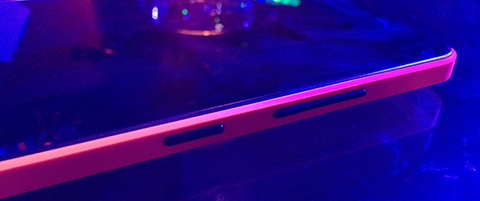
At the right side is where the volume rocker and power/lock screen button is positioned. With the latter placed almost at the middle of the side panel, it felt more natural and easy to press using the thumb. Controlling the volume, however, required us to reposition our hand to reach it.
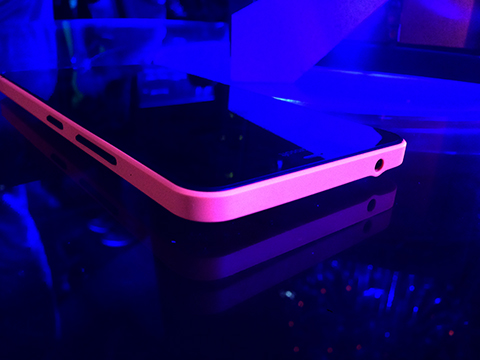
Up top is where a lonely audio jack is situated. It is favored more on the left edge so you can easily plug your headphones using your left hand. Why? Because the button placements of the volume and power are more inclined for right hand usage, leaving your left hand free to grab your pair of cans.
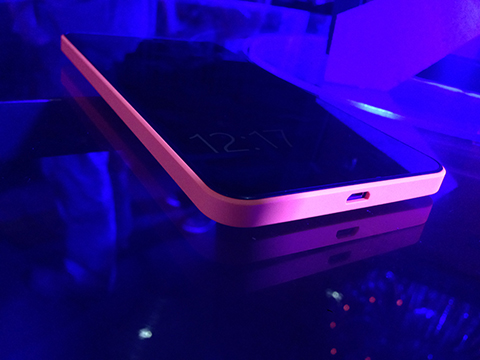
Centered down below is the micro-USB port for charging or transferring files.

The back is made of the same material seen in other Lumia devices with its polycarbonate cover that acts like a shell and houses the internals of the 640 XL. There are different colors available ranging from white, cyan, black, and neon orange.

A closer look at the back panel and we see Microsoft’s branding next to an almost-cross-design comprising of the Zeiss marking, rear camera, single LED flash, and speaker grille. Its shooter boasts a 13-megapixel sensor with Carl Zeiss optics — meaning the device pays special attention to imaging.

Popping the hard plastic panel off, we were greeted by its 3000mAh removable battery.
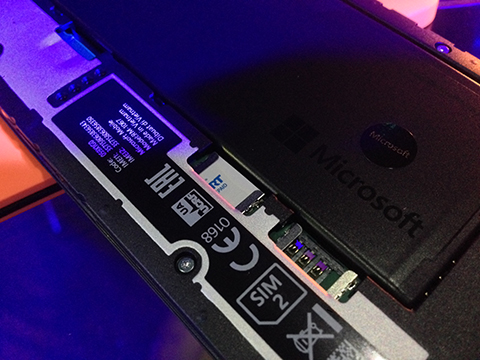
Beside the battery you will find the dual-SIM slots. We previously reported of an LTE variant seen on Avant-Abenson’s page, but what Microsoft launched today was only the 3G variant with the 4G model slated for a later release. In addition, the microSD slot also requires to remove the back panel in order to access it.
Holding and navigating it on one hand is possible since our thumb could still reach the Back capacitive button (which is the farthest our thumb could press). It’s also got some heft to it but not much, and not to the point that it becomes cumbersome. Finally, its 9-millimeter thick profile, for us, is just right and makes it easy to pick up the device lying flat on the table.
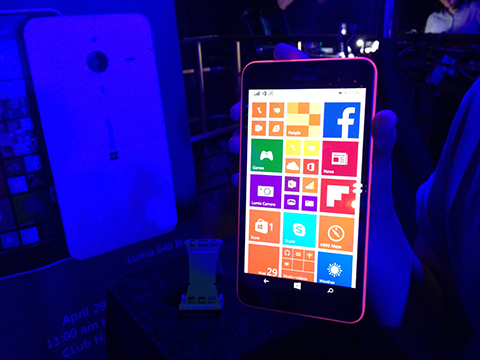
The Lumia 640 XL currently runs on Windows 8.1 system which is readily waiting for a Windows 10 update when it becomes available. It is powered by a Snapdragon 400 CPU with four cores and is teamed up with just 1GB RAM and 8GB intenal storage. For additional storage the company is also throwing in 15GB of OneDrive cloud storage into the package.
There are debates as to whether Lumia devices need better processors with people saying more power is better, while some say they’re actually happy with the performance of other Lumias even with just 512MB of RAM. Well, we had some time to fiddle around with it, giving us the chance to go deeper into its menu, open a series of apps, multitask, and so far everything went smoothly. It’s still unsure how well it could handle tasks when more programs are installed in it, but for our first impressions it did pretty well.
It will be available starting May 1, 2015 with an SRP of Php11,990. As mentioned earlier, there will also be a dual 4G variant coming and it will arrive this June so stay tuned for updates regarding that.
Microsoft Lumia 640 XL 3G Dual-SIM specs:
5.7-inch HD IPS display, 259ppi
Corning Gorilla Glass 3
1.2GHz Qualcomm Snapdragon 400 (MSM8226) quad-core CPU
1GB RAM
8GB internal storage
up to 128GB via microSD
13 megapixel AF rear camera w/ LED flash
5 megapixel front camera
Dual-SIM (micro), Dual-Standby
3G HSPA+
WiFi 802.11 b/g/n
NFC
Bluetooth 4.0
DLNA, Miracast
GPS, A-GPS, GLONASS
3,000mAh battery
Windows Phone 8.1 with Lumia Denim (upgradable to Windows 10)
157.9 x 81.5 x 9.0 mm
171 g
White, Cyan, Black, Orange
The post Microsoft Lumia 640 XL hands-on, first impressions appeared first on YugaTech | Philippines, Tech News & Reviews.

